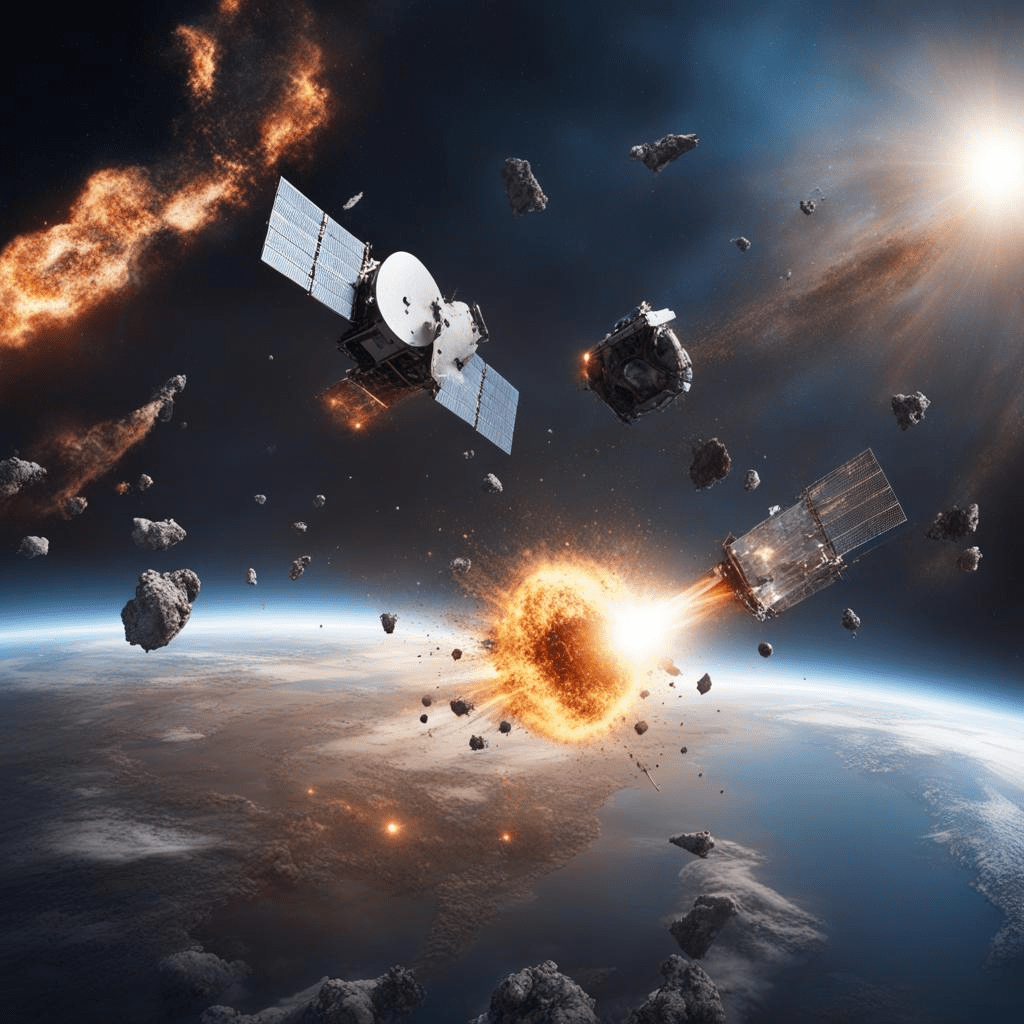Satellites have become an integral part of our modern world, providing services ranging from communication and navigation to earth observation and scientific research. As the number of satellites in orbit continues to grow, the challenges associated with their positioning and repositioning become increasingly complex. This article looks at the possibilities of satellite repositioning, the reasons for such maneuvers, the technical limitations, and gives an outlook on the future of satellite operations.
1. Reasons for Satellite Repositioning
a. Collision Avoidance: As space becomes more congested, the risk of satellite collisions increases. Repositioning is often necessary to avoid potential collisions with other satellites or space debris.
Satellite Collision Avoidance Using Deep Reinforcement Learning by Z. Sun, Y. Zheng, and Z. Zhu. This paper discusses the use of deep reinforcement learning for satellite collision avoidance. Read the full paper here.
b. Extending Satellite Lifespan: Satellites in geostationary orbits (GEO) can be moved to a “graveyard” orbit at the end of their operational life, reducing the risk of collision and space debris generation.
Traffic-Aware Satellite Switch-off Technique for LEO Constellations by V. Gupta, H. Al-Hraishawi, E. Lagunas, and S. Chatzinotas. The paper proposes a traffic-aware satellite switch-off technique to minimize power consumption in LEO constellations, which can extend the satellite’s lifespan. Read the full paper here.
c. New Missions: Repositioning can give satellites new tasks. For instance, a communication satellite might be moved to serve a different region.
Assessment of New Satellite Missions within the Framework of Numerical Weather Prediction by S. Newman, F. Carminati, H. Lawrence, N. Bormann, K. Salonen, and W. Bell. This paper explores the role of numerical weather prediction frameworks for the assessment of several meteorological satellite sensors. Read the full paper here.
L2-CalSat: A Calibration Satellite for Ultra-Sensitive CMB Polarization Space Missions by F. Casas, E. Martínez-González, J. Bermejo-Ballesteros, S. García, J. Cubas, P. Vielva, R. B. Barreiro, and A. Sanz. This paper discusses the use of a calibration satellite flying in formation with a Cosmic Microwave Background (CMB) polarization mission. Read the full paper here.
d. Malfunction Recovery: If a satellite malfunctions, it might be moved to a safer orbit until the issue is resolved or to prevent it from becoming a hazard.
2. Methods for Satellite Repositioning
a. Thrusters: Most satellites are equipped with thrusters that can be used for repositioning. These thrusters expel propellant to generate thrust, allowing the satellite to change its orbit.
b. Gravity Assist: Satellites can use the gravitational pull of the moon or other celestial bodies to alter their orbits, a technique often used in interplanetary missions.
c. Tethers: Electrodynamic tethers can generate thrust by interacting with a planet’s magnetic field, offering a propellant-free method of repositioning.
d. Solar Sails: These are large, reflective surfaces that harness the pressure of sunlight to generate thrust. They offer a slow but continuous propulsion method.
3. Technical Limitations
a. Fuel Constraints: Traditional thrusters rely on onboard fuel. Once this fuel is depleted, the satellite’s ability to maneuver is severely limited.
b. Physical Wear: Repeated maneuvers can wear out satellite components, potentially reducing its operational lifespan.
c. Time: Some repositioning methods, like solar sails, are slow and might not be suitable for urgent maneuvers.
d. Complexity: Repositioning a satellite requires precise calculations to ensure the desired orbit is achieved without causing other issues.
4. The Future of Satellite Repositioning
a. On-Orbit Servicing: Future missions might involve “service satellites” that can refuel or repair other satellites in orbit, extending their operational life and maneuvering capabilities.
b. Advanced Propulsion: Research is ongoing into more efficient propulsion methods, such as ion drives, which could offer longer-lasting repositioning capabilities.
c. Active Debris Removal: As space debris becomes a growing concern, future satellites might be equipped with technologies to capture and remove debris, potentially using it as fuel.
d. Swarm Intelligence: Future satellite constellations might operate using swarm intelligence, allowing them to autonomously reposition in response to changing conditions or tasks.
e. Space Traffic Management: As the number of satellites grows, there will be a need for more sophisticated space traffic management systems to coordinate satellite movements and ensure safe operations.
Conclusion
The ability to reposition satellites is crucial for ensuring their continued functionality, safety, and utility. While there are several methods available for satellite repositioning, each comes with its own set of challenges and limitations. However, as technology advances, we can expect more efficient and versatile solutions to emerge. The future of satellite operations promises to be dynamic, with innovations that not only address current challenges but also open up new possibilities for space exploration and utilisation.

